The Universal "Want" Button
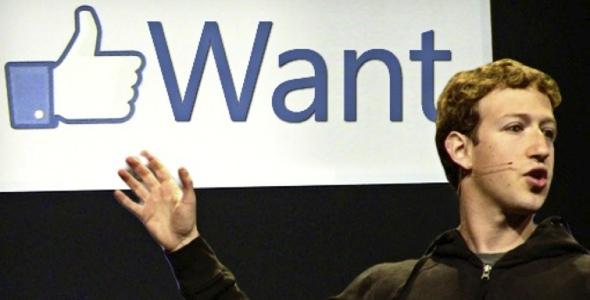
Yesterday’s photo of Mark Zuckerberg at Walmart Stores in Bentonville prompts speculation around a potential partnership between the two giants. However, we at First Retail are encouraging speculation of a different sort – that Walmart might be the vendor that will respond when a consumer hits a Facebook ‘Want’ button
Some Speculation

If Facebook does implement a ‘Want’ button, and anyone with a product to offer then any vendor will be able to leverage that infrastructure to allow a consumer to state they want a product and be able to publish the link to that product into the consumers social stream. This will open that need up to any number of vendors who might be able to fulfill that need – with an exact or similar product.
Walmart behind the Facebook ‘Want’ Button
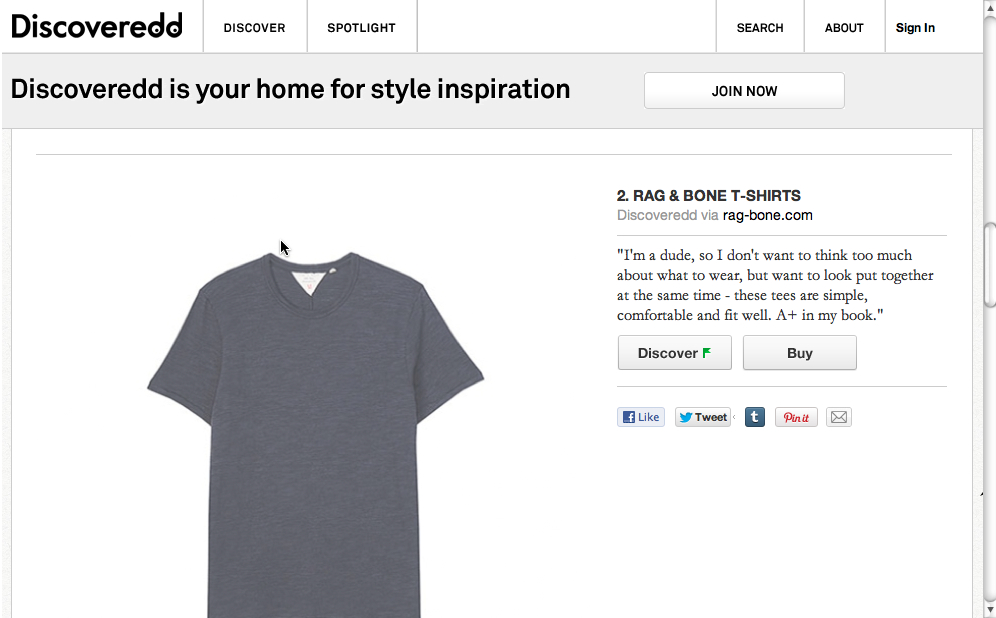
Now let’s add Walmart into the mix – let’s say I am on Michael Saiger’s page on Discoveredd.com where I see this Rag and Bone T-Shirt. On Rag and Bone’s site, this shirt is $80.
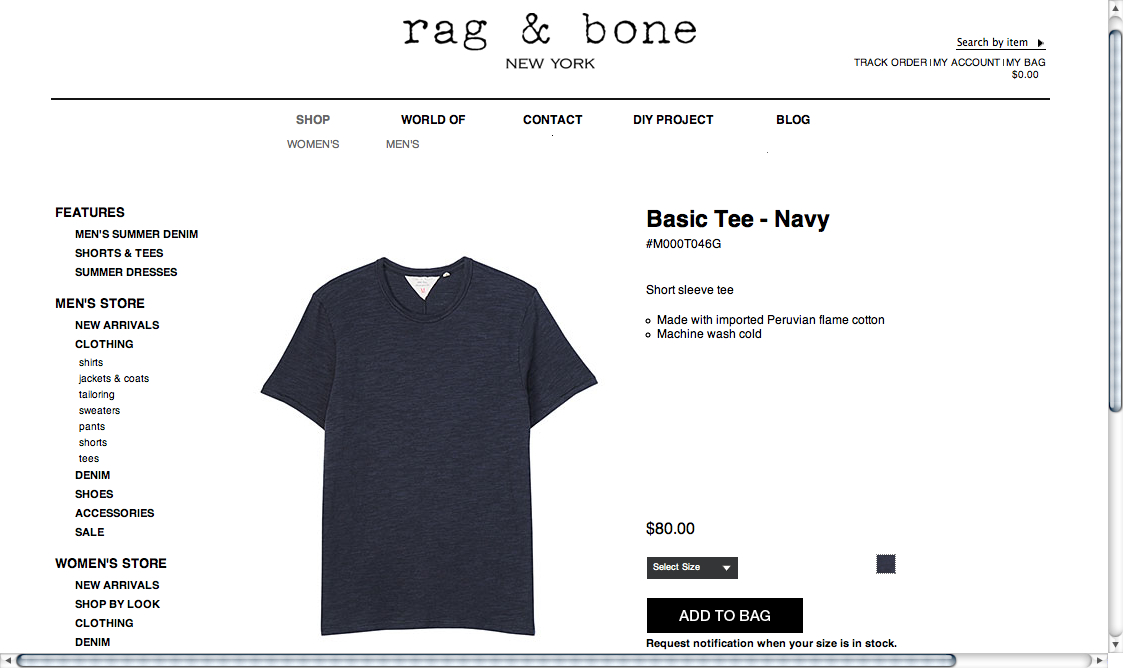
But there is also a Facebook Want button against that page – and clicking that will publish the the item to my Facebook feed. If I was signed into the new Walmart application, then that ‘want’ would be sent to them – and Walmart would instantly match it up with the Hanes – Men’s Short-Sleeve Beefy Tee.
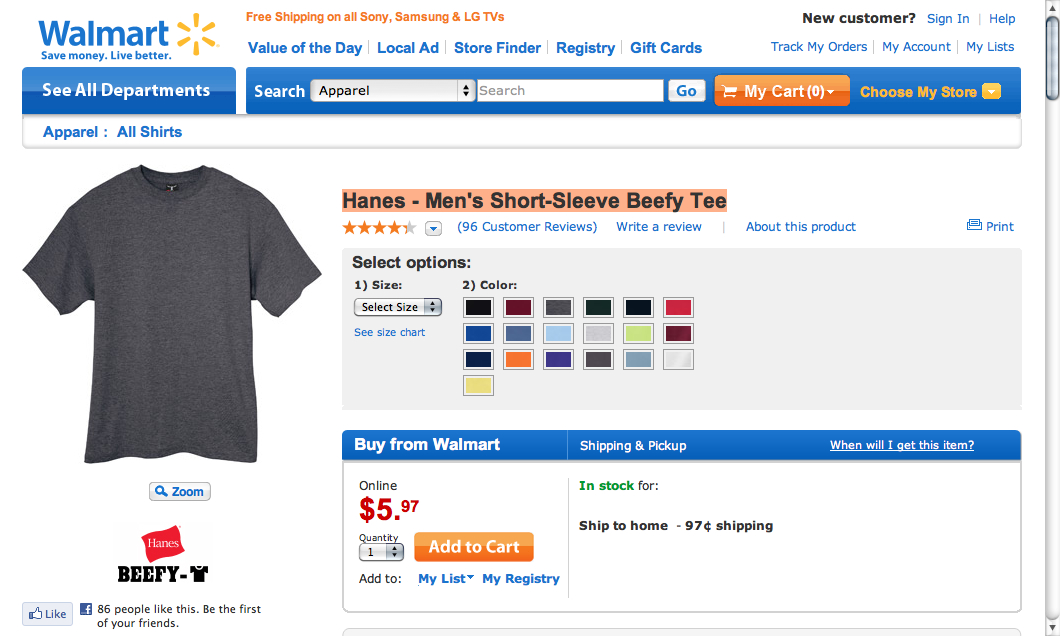
Not in the same league maybe, but at $5.97 with 97 cent shipping, this might be appealing to the shopper on a budget. What we see is the ability for a consumer to broadcast a very specific request out to selected vendors with whom they have a pre-existing relationship.
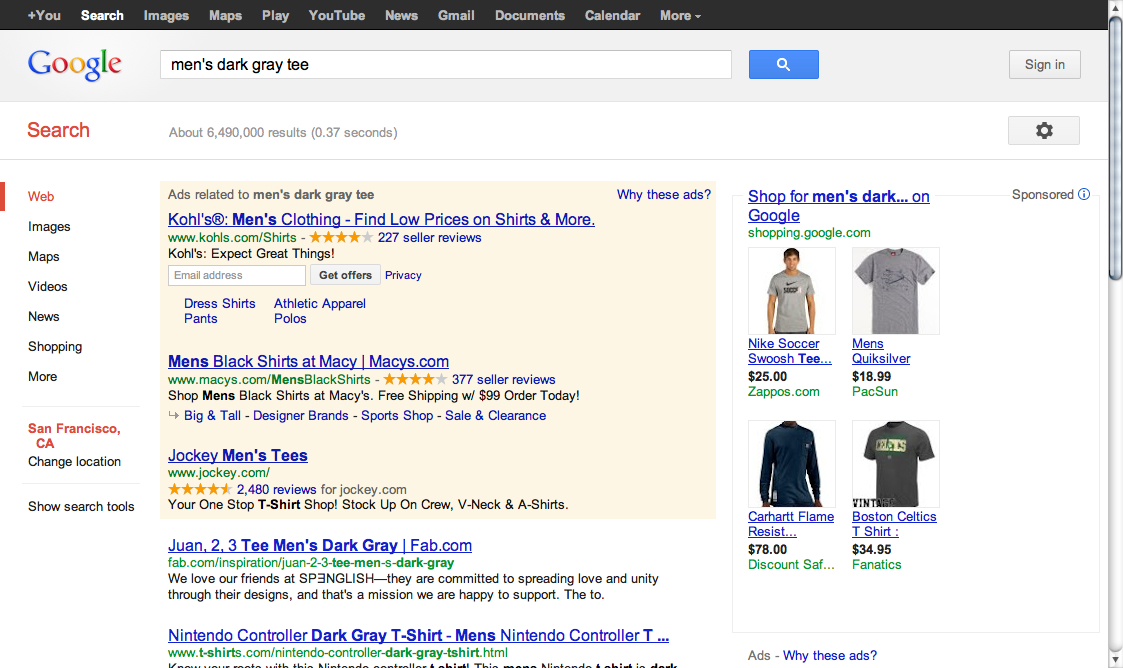
The equivalent of this today is just searching on Google for a Dark Gray Men’s Tee – which produces a large set of results from vendors with whom I have no existing relationship.
Returning to a Walmart – Facebook collaboration, this could focus the resources of the $446 billion dollar global retailer to service the needs of the 900 million active Facebook users. Now that might be worth paying attention to if you are in the retail business and even contemplating Social Commerce right now.
The Intention Economy
The Intention Economy movement (centered with the VRM Project at Harvard’s Berkman Institute) has been bubbling away for the past 5 years, seeking to reinstate the individual consumer’s power in the retailing equation.
In 2012, there has been a convergence of factors that lead us to believe that the Intention Economy can take off: There is now a general acceptance by the business community that Social Media is here to stay and Social Shopping is a valid and powerful phenomenon; The Facebook IPO now puts Facebook under the scrutiny to be on a path to reliable and sustainable revenue growth; and finally there are a number of technologies (Mobile, Semantics and Cloud) that are emerging from the research labs and finding their way into consumer products and applications.
The Universal Want Button
Going beyond Facebook’s want button, there are already a number of sites where consumers can explicitly state their needs – as a sort of ‘consumer RFP’, A number of sites and mobile apps are already bringing this concept to market – Zaarly, Ubokia, Billy and Pikaba – are facilitating peer to peer request-response services. Their natural evolution will be to allow consumers’ requests to be serviced by vendors.
Once the practice is commonplace, consumers will be ready to adopt either making and publishing requests – either via text posts or by clicking on a Want button. And as that button could be anywhere owned by anyone, Facebook does not need to have a monopoly on it – and this is where the notion of the ‘universal want button’ is born. Once the intention paradigm has been established, it will only be a matter of time before mobile devices will allow us to overlay a want button over a physical object in the street and then recognize the object to allow a sensible request to be created.
Intention Economy Timeline: 2012 thru’ 2016
- 2012 – Facebook IPO’s and announces partnership with Walmart
- 2013 – Rise of the marketplace – Sears SYW, Amazon Personal RFP, Ebay Wanted, Aggregators like Google shopping, Shopzilla, Buy.com and Shopping.com all adopt similar models. More brands and manufacturers rush to market with direct operations
- 2014 – Independent purchasing agents will evolve from the P2P sites like TaskRabbit, Ubokia, Zaarly and Billy. Travel sites (e.g. Kayak) will lead the way and Financial services (e.g. LendingTree) will quickly follow. As both of these can be complex configured products where the advantage of an RFP is easy to see from a consumer perspective. Traditional hard goods retailers reduce investment in their own sites in favor of publishing machine readable catalogs and offer APIs to purchasing agents. Most products will be available via online marketplaces that become the new shopping malls of the online worlds. Rise of third party outsource supply chains.
- 2015 – Online retailing is shifting with over 30% of revenues coming from RFP style searches rather than site search and browse. Many Chinese and Latin American manufacturing organizations will start developing brands to sell direct to consumers via marketplaces and international payments infrastructures will develop to follow
- 2016 and beyond – Majority of purchases come from request systems, semantic retail is now the norm. Retailing is a thing that can be done anywhere, anytime and with any device – requests are aggregated and will appear in many marketplaces, Vendors without presence in those marketplaces are effectively locked out of these markets and will decline. Governments intervene to regulate marketplaces as they are crossing international boundaries and disrupting commerce and balances of payments
Retailer – Take These Steps to Survive and Prosper
- Clean your data and ensure that it is ready to be processed by machines (this could take up to 3 years)
- Determine the categories where you can compete
- Either develop a competence in ‘marketplace’ or be prepared to lose your own direct channels and sell through other marketplaces
- If you are building your own marketplace, understand how the intention economy will work
First Retail’s Marketmaker
First Retail’s Marketmaker technology has been designed to serve the needs of the bi-directional marketplace. It is able to hold inventory or product and in real time match a request with products that meet the buyers criteria. Likewise, it is equally able to hold an inventory of requests and as a vendors product becomes available, will be able to serve up all matching requests. Imagine as a marketer, being able to query a repository of requests for products and see which ones are not currently serviced with offers – then sourcing those and being able to understand the price elasticity for the product even before you have produced it. This is why we are building the Marketmaker.
We read and read and read, here’s what we read this time:
- Zuckerberg’s Facebook Picture Hints at Walmart Partnership” from Mashable July 20th, 2012
- Facebook, Wal-Mart chiefs meet to “deepen” relationship Reuters Jul 19, 2012
- Little “Want” Button Code Foreshadows Big Things For Facebook Ecommerce from TechCrunch July 3rd, 2012
- Facebook testing ‘Want’ button plugin from Inside Facebook June 28th, 2012
- Walmart on Wikipedia
- Facebook on Wikipedia
- The Web is the Market on First Retail’s Blog May 2012

